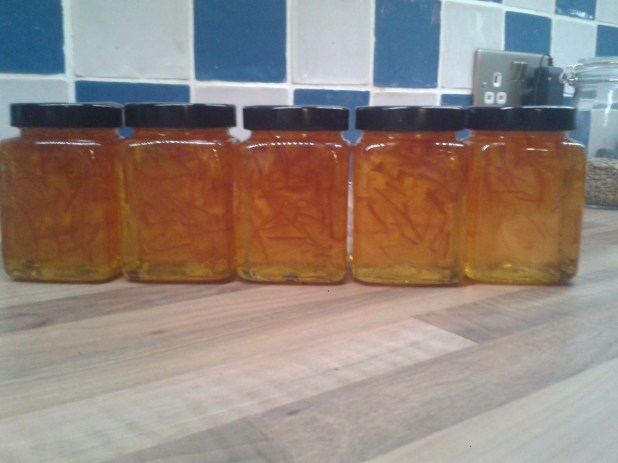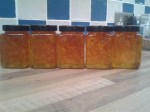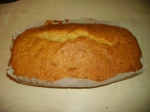An easy, moist, tasty traybake version of carrot cake. It can also be made in muffin cases but watch the temperature and cooking time if you make them as muffins – they cook quicker and may burn if you’re not careful.
- 250g carrots
- 150g butter, unsalted
- 2 large eggs
- 200g light soft brown sugar
- 200g self-raising flour
- Half a teaspoon of salt
- 2 teaspoons ground cinnamon
- 2 teaspoons baking powder
- 75g roughly chopped walnuts
- 2 tablespoons milk
- For the topping:
- 50g icing sugar
- 200g cream cheese – must be full fat!
- 1 tablespoon lemon juice
- Half a teaspoon vanilla extract
You’ll need a 28 x 18cm rectangular tin, or about a dozen muffin cases.
Heat the oven to 180 degrees C or gas mark 4.
Line the base of the tin with baking parchment and brush the sides and base of the tin with a little vegetable oil. Wash the carrots, cut off the tops and grate them. Put the butter into a pan and heat it gently until it has just melted, or you can melt it in a suitable container in the microwave – 20 seconds at full power, give it a stir, another 20 seconds, etc. etc. until it’s melted but not boiling hot. Pour the melted butter into a large bowl. Break the eggs into a small bowl and beat them. Stir in the carrots and sugar to the large bowl, then add the beaten eggs. Sieve the flour, salt, cinnamon and baking powder into the mixture and beat with a wooden spoon until it is smooth. Add the chopped walnuts, and stir in two tablespoons of milk. Spoon the mixture into the tin. Smooth the top with a spoon. Tap the tin gently on your work surface to make the mixture level. Bake for about 45 minutes. Test by sticking a skewer into the cake. If it comes out clean, it’s ready. Leave the cake to cool in the tin for about 10 minutes, then turn it out onto a wire rack. While the cake is cooling, sift the icing sugar into a clean bowl. Add the cream cheese, lemon juice and vanilla and beat the mixture well. You may need more icing sugarif you feel the icing is too sloppy. When the cake is cool, spoon the topping onto it and spread it around. Cut into squares.
TOP TIP: if your tub of baking powder has been open for more than about 6 months, chuck it out and buy some new. It does go off eventually; as it absorbs moisture from the air it loses some of its abililty to make bubbles in your cake mixture.




